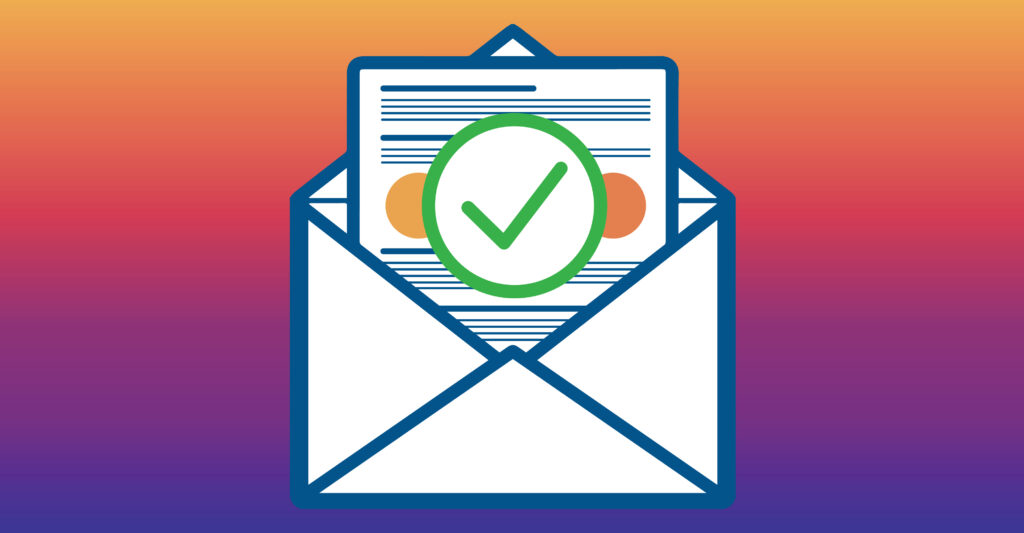How Can Marketing and Sales Teams Improve Email Deliverability?
Email marketing has established itself as a critical channel for directly communicating with your customers and prospects. In the first article in this series, we discussed what email deliverability is and the common challenges faced if you don’t maintain your deliverability score, now let’s explore the best practices to improve your email deliverability score starting with:
- Setting up your email authentication standards
- Acquiring, verifying, and maintaining clean, accurate contact lists and emails
- Utilizing Postmaster Tools
- Understanding Brand Indicators for Message Identification (BIMI)
Set Up Email Authentication Standards
The email authentication standards required to send emails ensure that your email gets in the recipient’s inbox. Suppose you do not have your email authentication standards in your automation platform set up correctly. You then risk being blocked from your email account and not landing directly in the inbox. This is why it’s imperative to understand the following terms:
SPF Authentication Process
Sender Policy Framework (SPF) is a protocol that allows the domain admin to define the list of mailing servers being used. SPF creates a record in your Domain Name System (DNS) that lists the authorized servers that can send emails on behalf of your domain.
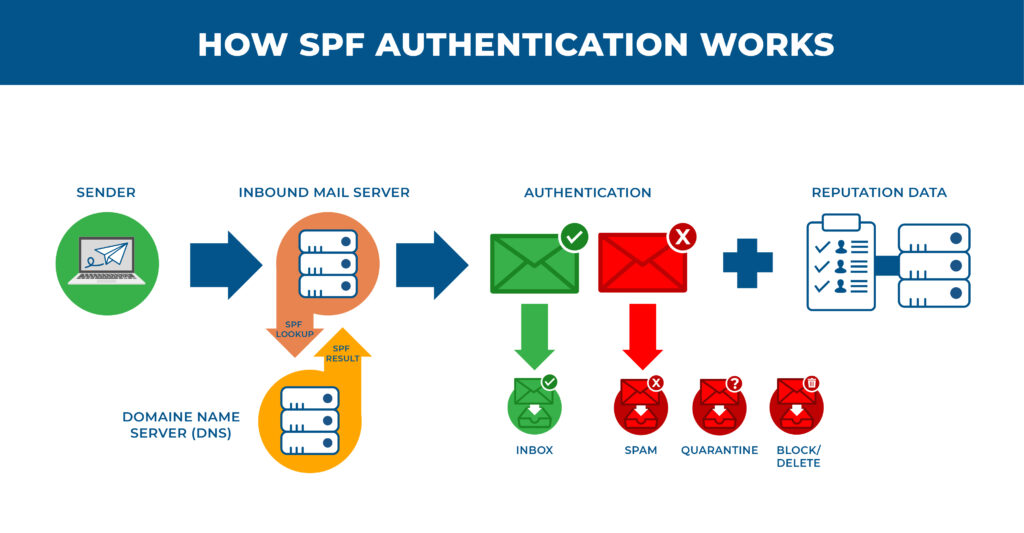
The SPF protocol increases your trustworthiness with the server receiving your email. SPF allows the email server to cross-check the domain name with the associated IP address. If you do not have an SPF in place, your emails risk being rejected or spam folder.
DKIM Authentication Process
Domain Keys Identified Email (DKIM) allows a sender’s ESP to verify that the email received is by an authorized source. It confirms this by providing a digital signature with your DNS records.
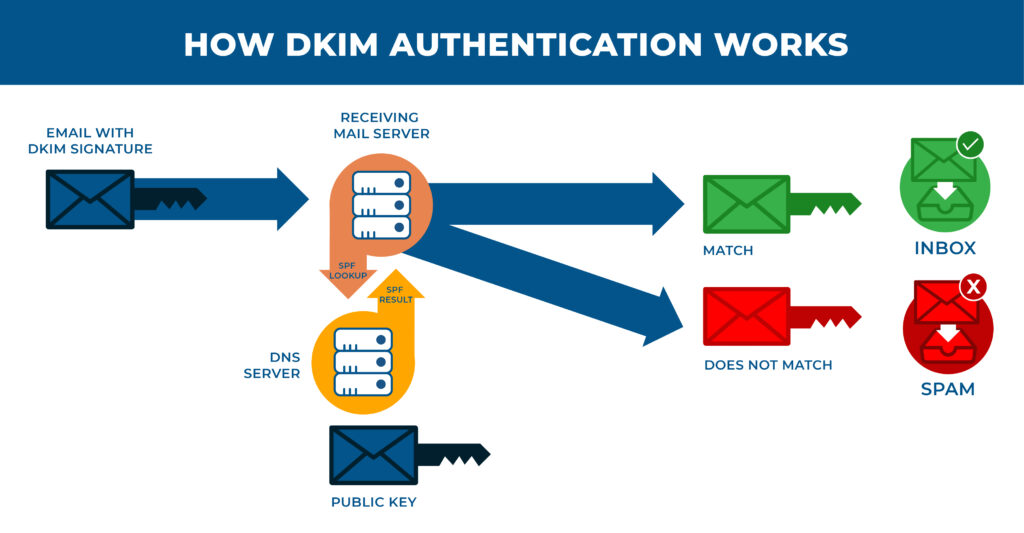
The DKIM authentication process is different from other deliverability measures. DKIM verifies that your email domain is owned by your company by including domain-specific, encrypted keys with each email sent.
What is DMARC?
Domain-based Message Authentication, Reporting, and Conformance (DMARC) is designed to detect email spoofing. DMARC is an email validation tool that helps prevent phishing and email spam. DMARC records your SPF and DKIM activity, ensuring there is nothing fraudulent associated with the email. DMARC assures the receiver’s ESP that your email is ok to push into the inbox.
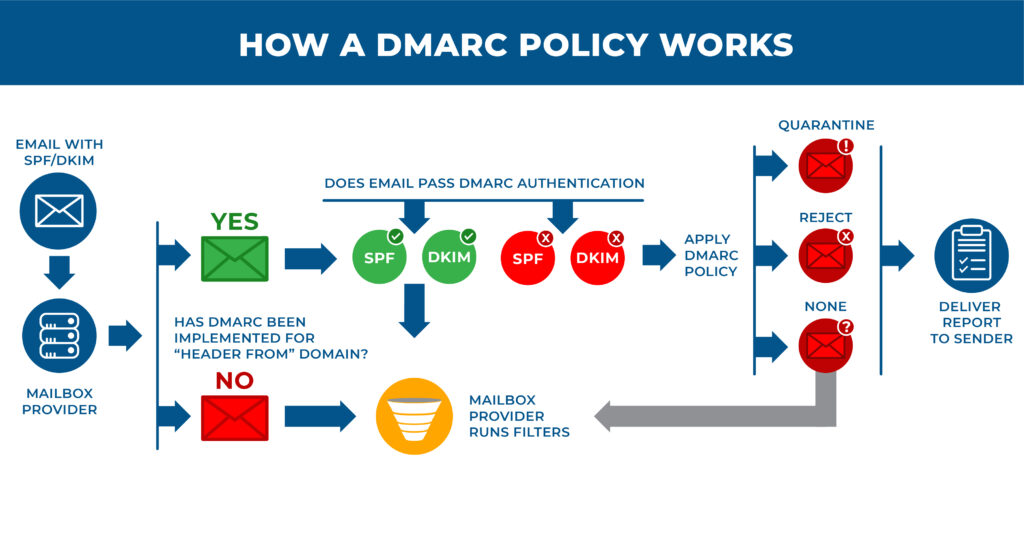
How to Setup Authentication With Your Email Service Provider
There are three email standards that email service providers typically use to help prevent spoofing and phishing with your company’s emails. These three standards help ensure your outgoing messages aren’t marked as spam and keep your emails sake.
Google and Microsoft provide you with simple step-by-step guides to help you properly authenticate your emails. The articles below will help you better understand these technologies, set up email authentication standards, and show you how to use them to improve your email deliverability.
- Google: Prevent spam, spoofing & phishing with Gmail authentication
- Microsoft: Email authentication in EOP
Properly setting up these email authentication standards helps prevent email fraud and blocks spammers, spoofers and scammers from getting into your inbox. Email authentication protocols work behind the scenes to build rapport with your customer base and improve your email deliverability score.
Understanding BIMI
BIMI, or Brand Indicators for Message Identification, is the newest email authentication standard that helps your brand stand out in the inbox by attaching your logo to your email, providing a visual verification for your audience.
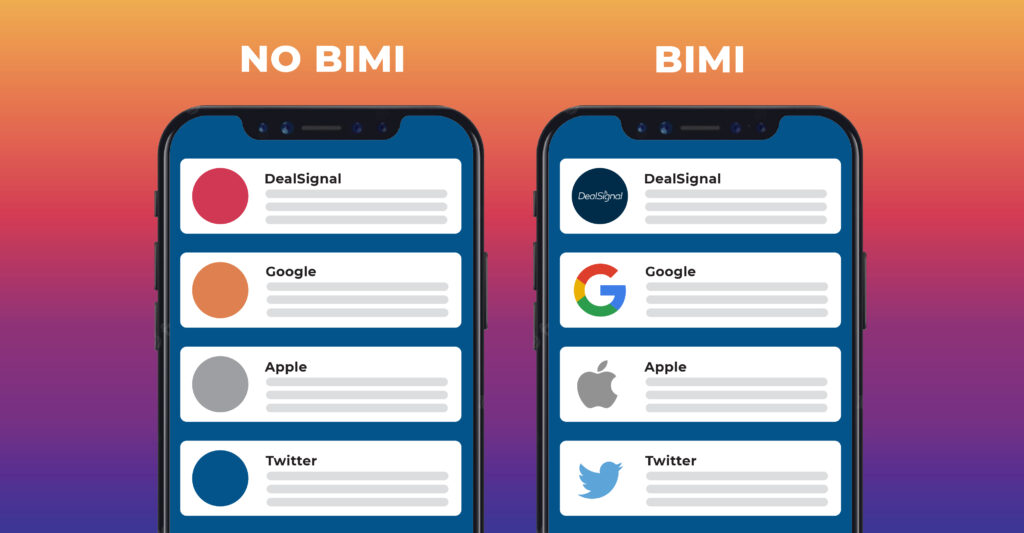
BIMI takes advantage of your company’s work of implementing SPF, DKIM and DMARC into your email automation platform. BIMI allows you to bring your brand to the inbox by leveraging the protection DMARC brings to your emails, like authentication checks and ensuring your domain hasn’t been impersonated.
Email authentication methods help ESPs prove the authenticity of your emails. While this plays a vital role in getting into your customer’s inbox, maintaining a good sender’s reputation and using clean data lists are just as important to your email deliverability score.
Maintaining Your Sender’s Reputation and Data Hygiene
It’s crucial to ensure that your sender’s reputation is good. Your sender’s reputation is the most significant part of email deliverability. It’s based on your audience’s engagement with your emails while also factoring in the content, email frequency, open rates, and authenticity of your emails.
Along with your sender’s reputation, maintaining clean contact lists is crucial to maintaining a high email deliverability score. To improve your deliverability, it’s important to consistently suppress your lists for disengaged, unsubscribed, and bounced contacts. Using fresh, accurate, and up-to-date B2B data lists with 98% accuracy rates help ensure you land in your customer’s inbox – which is the ultimate goal.
Communicating with a clean, engaged audience leads to a strong sender reputation and is the key to maximizing your deliverability. However, if you’re unsure about the status of your email performance you should consider using Postmaster Tools.
Using Postmaster Tools To Measure Email Performance
Do you think you’re experiencing email deliverability issues? Then, it would be best if you considered using a postmaster tool. Postmaster tools are free online tools that provide marketers direct access to email reputation, deliverability, security and performance data about their email domains and IPs. Postmaster Tools allow you to view different dashboards to analyze details like delivery errors, spam reports, feedback loops, and more.
The following Email Service Providers (ESPs) have postmaster tools you can use to measure your email performance data:
Gmail
Google Postmaster Tools
https://gmail.com/postmaster/
Outlook (outlook.com, hotmail.com, msn.com and live.com)
Microsoft Smart Network Data Services (SNDS)
https://postmaster.live.com/snds/
AOL, Verizon, Yahoo!
Verizon Media Postmaster Tools
https://postmaster.aol.com/
Improving Your Email Deliverability Is Simple
Focusing on email deliverability not only helps you get into the inbox but also helps with other email performance statistics like engagement rates.
- Low engagement rates = Low deliverability
- High engagement rates = High deliverability
But, if you ignore email deliverability, that creates a domino effect of issues, including tarnishing your sender’s reputation. With DealSignal, you can ensure your email deliverability score never plummets and emails always land in the inbox. DealSignal provides a 97+% email accuracy rate and helps reduce risk by eliminating insufficient data. Get started with DealSignal today.
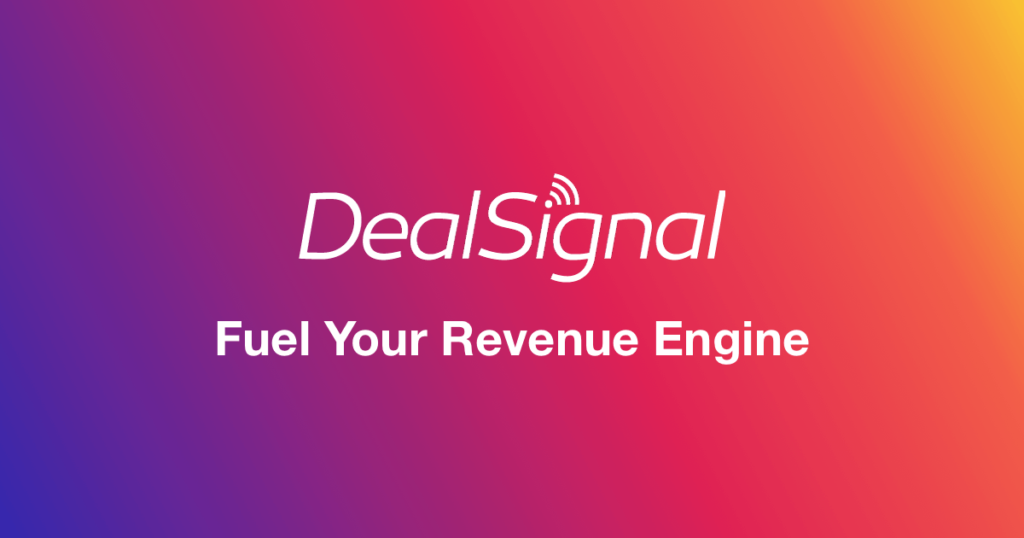
Dynamic B2B Data Solutions. Clear and Open Pricing. Exceptional Customer Support. Depend on DealSignal.
Learn more about Email Deliverability:
- From Cold to Sold: 10 Powerful Email Marketing B2B Lead Generation Strategies
- Email Engagement Strategy: Accomplish Superior Email Deliverability
- How B2B Data Quality Impacts Email Deliverability
- B2B Email Marketing: Best Practices and Essential Tips for 2024
- Demand Generation vs. Lead Generation: Key Differences and Strategies

